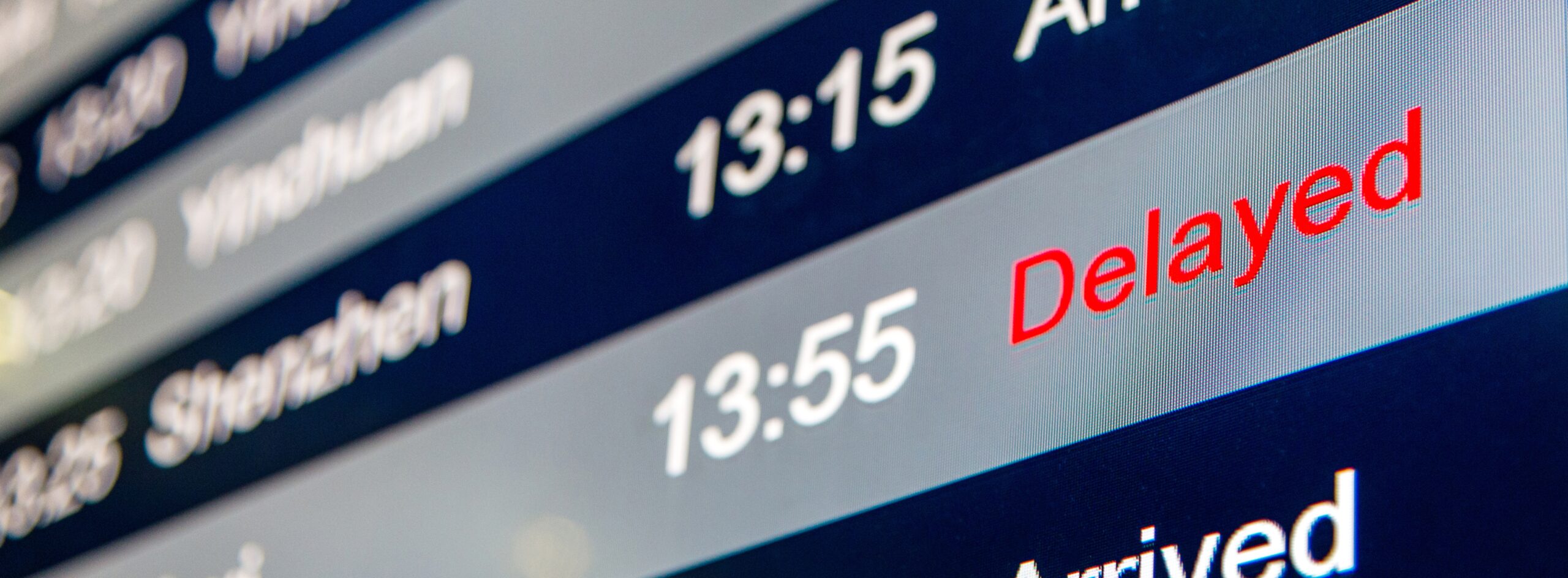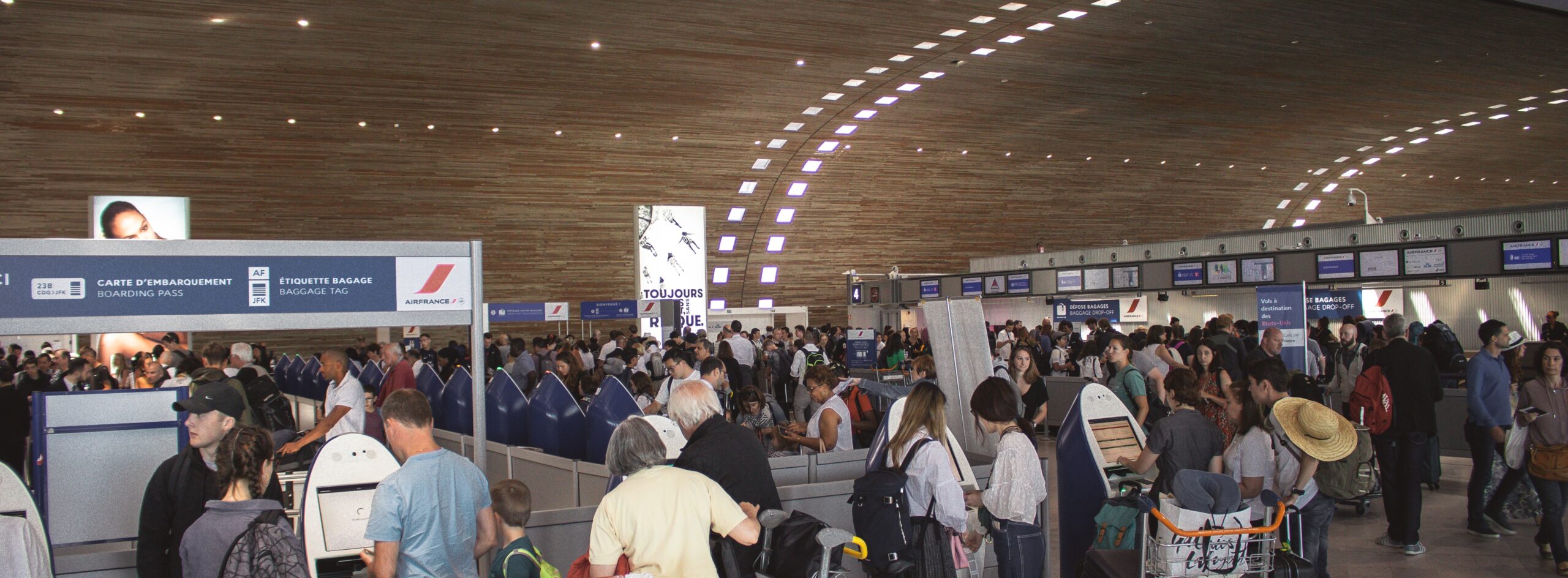Flight disruptions create perfect storms for airline call centers. Within minutes of a cancellation or significant delay, phone lines become overwhelmed with frustrated passengers seeking rebooking assistance. This surge in demand not only strains customer service resources but also creates a cascade of operational challenges that can persist long after the initial disruption is resolved.
The solution lies in empowering passengers to take control of their own rebooking through intelligent self-service re-accommodation tools. By providing intuitive, comprehensive platforms that allow travelers to explore alternatives and make rebooking decisions independently, airlines can dramatically reduce call center pressure while simultaneously improving customer satisfaction.
The Call Center Crisis During Disruptions
When flights are disrupted, traditional customer service models break down rapidly. Call centers designed for normal operational volumes suddenly face demand spikes that can exceed capacity by several hundred percent. This creates a domino effect of problems: extended hold times, overwhelmed agents, inconsistent information delivery, and ultimately, frustrated passengers who may abandon their rebooking attempts altogether.
The challenge is compounded by the complexity of rebooking scenarios. Agents must navigate multiple systems, check inventory across various flights, consider passenger preferences and fare rules, calculate compensation entitlements, and coordinate with other departments – all while managing stressed customers and working under time pressure.
Current industry data shows that over 67% of customers prefer using a form of self-service rather than talking to a customer service representative, and 72% of customers stated that they have used self-service portals, and 55% have used self-service chatbots. This preference for self-service becomes even more pronounced during disruptions when passengers want immediate solutions rather than waiting in long phone queues.
The Self-Service Solution: Core Components
Real-Time Inventory Integration
Effective self-service re-accommodation requires seamless integration with airline reservation systems to display real-time seat availability. Passengers need to see the same inventory that agents would access, ensuring that their rebooking choices are immediately actionable. This includes not just the airline’s own flights but also partner airline options and codeshare agreements.
Intelligent Option Ranking
The system must present rebooking alternatives in a logical, prioritized order based on passenger preferences, fare class entitlements, and operational constraints. This intelligent ranking reduces decision fatigue and guides passengers toward optimal solutions that balance their needs with airline operational requirements.
Automated Fare Calculation
Self-service platforms must automatically calculate fare differences, additional fees, and compensation entitlements based on the passenger’s original booking and the selected alternative. This transparency builds trust and reduces the need for follow-up calls to clarify charges or refunds.
Multi-Channel Consistency
The self-service portal must maintain consistency across web, mobile, and kiosk interfaces, ensuring that passengers can start their rebooking process on one device and complete it on another without losing progress or encountering conflicting information.
Operational Benefits for Airlines
Immediate Volume Reduction
Self-service re-accommodation tools can handle a significant portion of straightforward rebooking requests without human intervention. In 2024, self-service channels, apps, and portals became indispensable. Passengers loved the autonomy, and airlines loved the reduced operational costs. This immediate volume reduction allows call center agents to focus on complex cases that truly require human expertise.
Improved Agent Productivity
When agents are freed from routine rebooking tasks, they can dedicate more time to passengers with special needs, complex itineraries, or unique circumstances that require personalized attention. This improved focus leads to better resolution rates and higher customer satisfaction for cases that do require human intervention.
24/7 Availability
Self-service platforms operate continuously, allowing passengers to rebook flights at any time without waiting for call center hours. This is particularly valuable for international disruptions that may occur outside normal business hours or affect passengers in different time zones.
Reduced Training Requirements
Call center agents handling disruptions require extensive training on fare rules, inventory management, and rebooking procedures. Self-service systems encode this knowledge into automated workflows, reducing the training burden and ensuring consistent application of policies.
Customer Experience Advantages
Immediate Access to Options
Passengers can view available alternatives instantly without waiting on hold. This immediate access is crucial during major disruptions when time is of the essence and passengers need to make quick decisions about their travel plans.
Transparent Information
Self-service platforms can present comprehensive information about each rebooking option, including fare differences, amenities, connection times, and arrival changes. This transparency helps passengers make informed decisions and reduces anxiety about the rebooking process.
Control and Autonomy
Modern travelers increasingly value control over their travel experience. Self-service re-accommodation tools provide passengers with the autonomy to explore options, compare alternatives, and make decisions at their own pace without feeling pressured by time-conscious agents.
Implementation Strategies for Maximum Impact
Progressive Rollout
Airlines should implement self-service re-accommodation tools gradually, starting with simple scenarios like same-day rebooking on the same route before expanding to more complex multi-leg itineraries or international connections.
Clear Communication
During disruptions, airlines must proactively communicate the availability of self-service options through multiple channels including SMS, email, mobile app notifications, and airport displays. Many passengers default to calling customer service simply because they’re unaware of self-service alternatives.
Fallback Mechanisms
The system must include clear pathways for passengers to access human assistance when needed. This might include chat support integrated into the self-service portal, callback options, or escalation to priority phone lines.
Continuous Optimization
Airlines should regularly analyze self-service usage patterns to identify pain points and optimization opportunities. This includes tracking completion rates, abandonment points, and the types of scenarios that require human intervention.
The VoyagerAid Self-Service Re-accommodation Feature
VoyagerAid’s self-service re-accommodation tool exemplifies these principles through its comprehensive passenger-facing portal. The system integrates seamlessly with existing airline infrastructure while providing an intuitive interface that guides passengers through the rebooking process.
Key capabilities include:
- Real-time inventory display across the airline’s network and partner carriers
- Intelligent rebooking suggestions based on passenger preferences and operational constraints
- Automated fare reconciliation with transparent pricing and fee calculations
- Multi-device compatibility ensuring consistent experience across all touchpoints
- Integration with loyalty programs to maintain elite benefits and preferences
- Comprehensive trip management including connecting flights, seat assignments, and special services
The platform’s analytics dashboard provides airlines with detailed insights into passenger behavior, helping optimize both the self-service experience and overall disruption management strategies.
Measuring Success: Key Performance Indicators
Airlines implementing self-service re-accommodation should track these critical metrics:
Volume Metrics
- Self-service adoption rate: Percentage of disrupted passengers using self-service tools
- Call center volume reduction: Decrease in disruption-related phone calls
- Completion rate: Percentage of passengers who successfully complete rebooking through self-service
Experience Metrics
- Time to resolution: Average time from disruption notification to completed rebooking
- Customer satisfaction scores: Feedback specific to the self-service experience
- Abandonment rate: Percentage of passengers who start but don’t complete self-service rebooking
Operational Metrics
- Agent productivity: Cases handled per agent during disruption events
- Average handle time: Duration of calls that do require human intervention
- Escalation rate: Percentage of self-service attempts that require agent assistance
Future Considerations
AI Integration
Advanced AI capabilities can further enhance self-service re-accommodation by providing personalized recommendations, predicting passenger preferences, and offering proactive rebooking suggestions before passengers even request them.
Predictive Analytics
Machine learning algorithms can analyze historical data to predict which passengers are most likely to accept specific rebooking options, allowing the system to optimize suggestions for both passenger satisfaction and operational efficiency.
Integration with External Services
Future self-service platforms may integrate with hotel booking systems, ground transportation providers, and other travel services to provide comprehensive trip recovery solutions beyond just flight rebooking.
Conclusion
Self-service re-accommodation tools represent a fundamental shift in how airlines manage flight disruptions, dramatically reducing call center pressure while improving customer satisfaction and operational efficiency.



